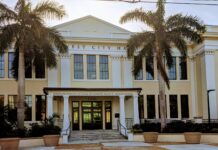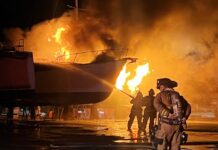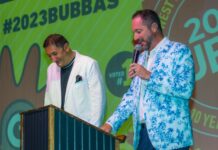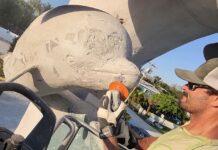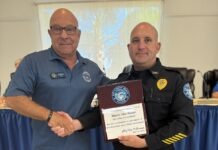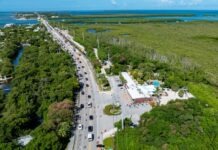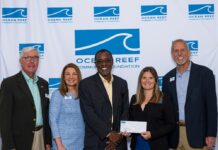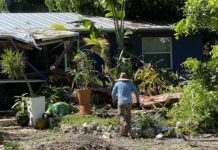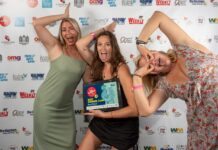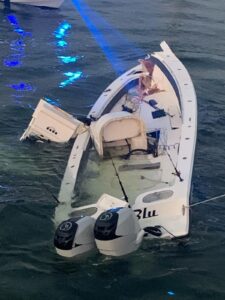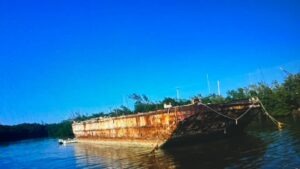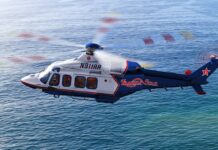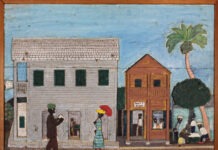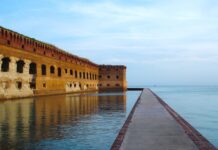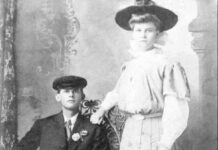
Sun-drenched perfection graced the Florida Keys on the Saturday morning that I decided to help clean up the ocean. As a follow-up to a previous article I wrote about the partnership between Isla Bella Beach Resort and the Conch Republic Marine Army (CRMA) – scan the QR code to learn more about it – I wanted to get my feet wet and my hands dirty and really experience their motto of “making dirty friends in trashy places.” I definitely met some amazing friends that day.
I arrived at the Isla Bella marina around 9:30 a.m. Upon my arrival I was greeted by captain Bill Keogh, who shook my hand and thanked me for coming to help with the cleanup efforts. He escorted me to a dock box which housed an assortment of thick-soled water booties. I proceeded to pick out my lovely sloshing-around boots and squeezed my feet into them. He then introduced me to the fellow trash-diggers with whom I’d be working that day. As we made our way aboard the 33-foot K3 Henrikson skiff, each of us grabbed a pair of gloves, medical shears and large green collection bags. I briefly chatted with everyone aboard and sparked up a fun conversation with the captain.
“So, Captain Bill,” I asked, “What was the craziest thing you guys have ever collected on a trip?”
“That’s a question we get a lot,” he said. “On trips that I’ve been on personally, we found a giant dock box with 32 life jackets inside. We tried to find the owner, but didn’t have any luck. CRMA has actually found a kilo of cocaine on a trip – that was pretty exciting. And on another trip I was on, we found a weather instrument from NOAA. We ended up getting it back to its owner, so that was cool.”
Our leisurely northbound journey along the mangroves initially revealed a mostly pristine coastline, thanks to past cleanup efforts. However, nearing the final section, the evidence of the revitalization – or lack thereof, in this area – became undeniable. The president of CRMA, Brian Vest, often refers to the Keys’ coastlines by saying, “54 miles done, only 900 more to go,” and having witnessed the transformation from a trashed shoreline to a clean one, it’s no surprise he feels that way.
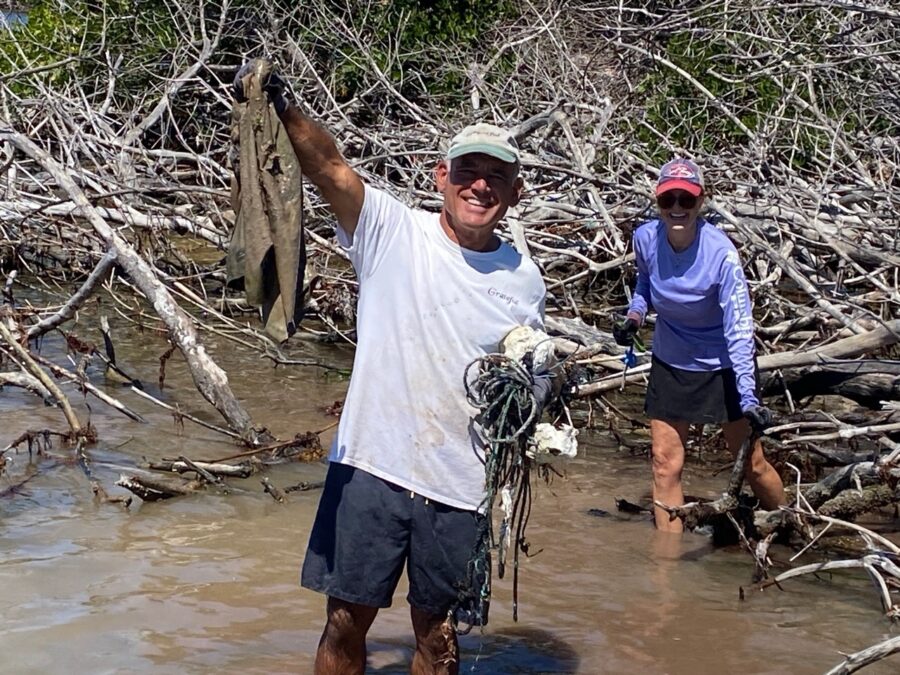
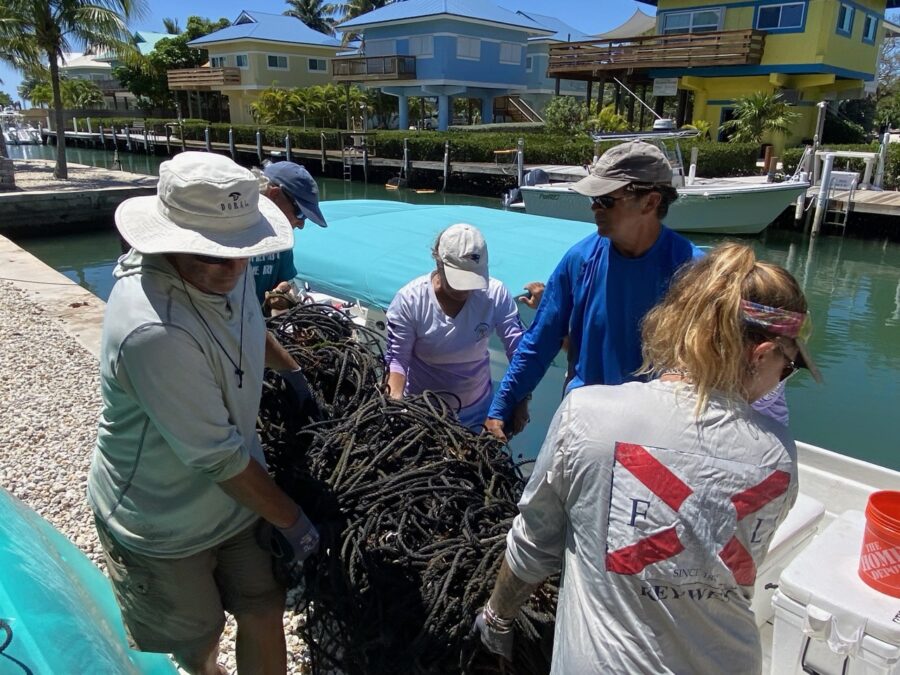

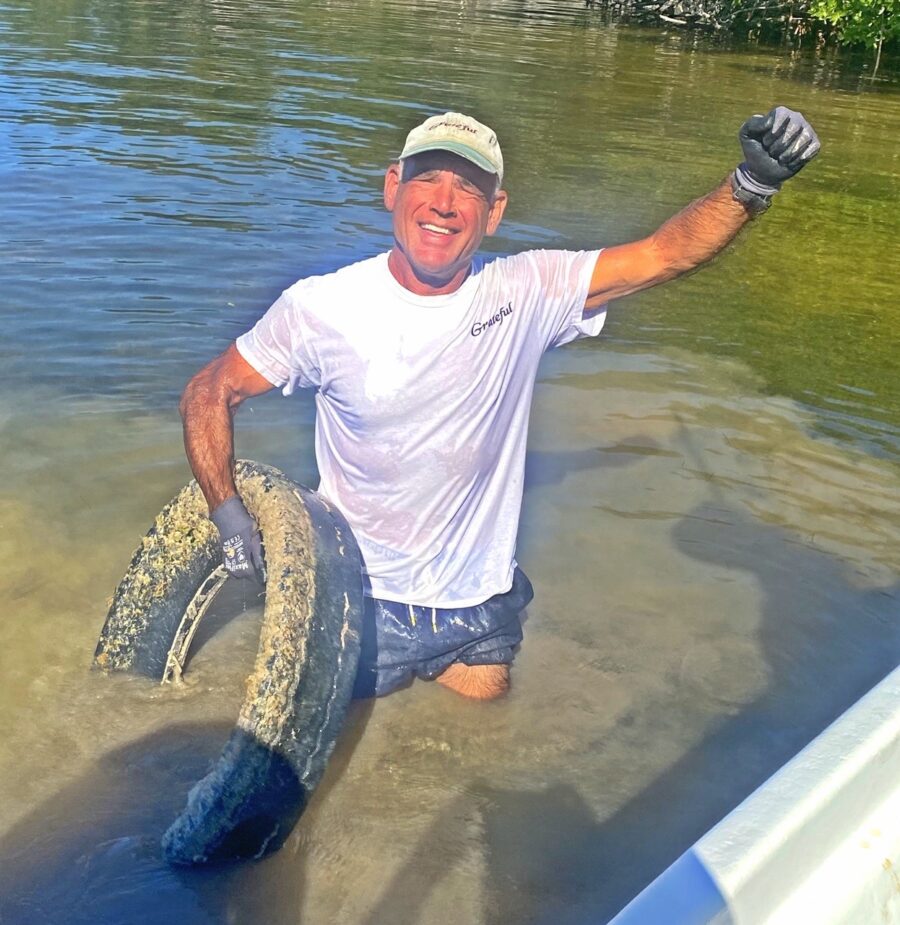

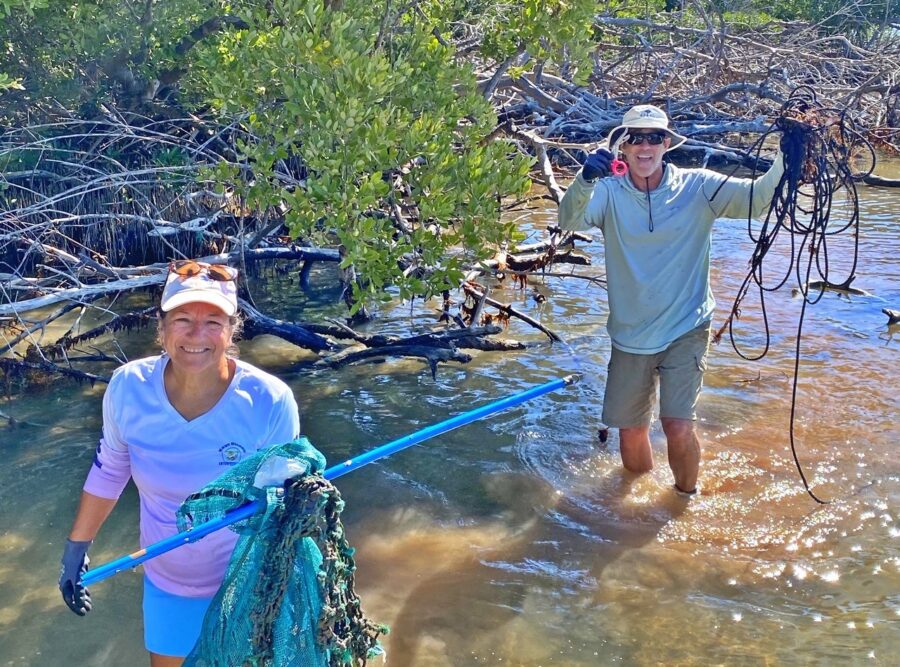
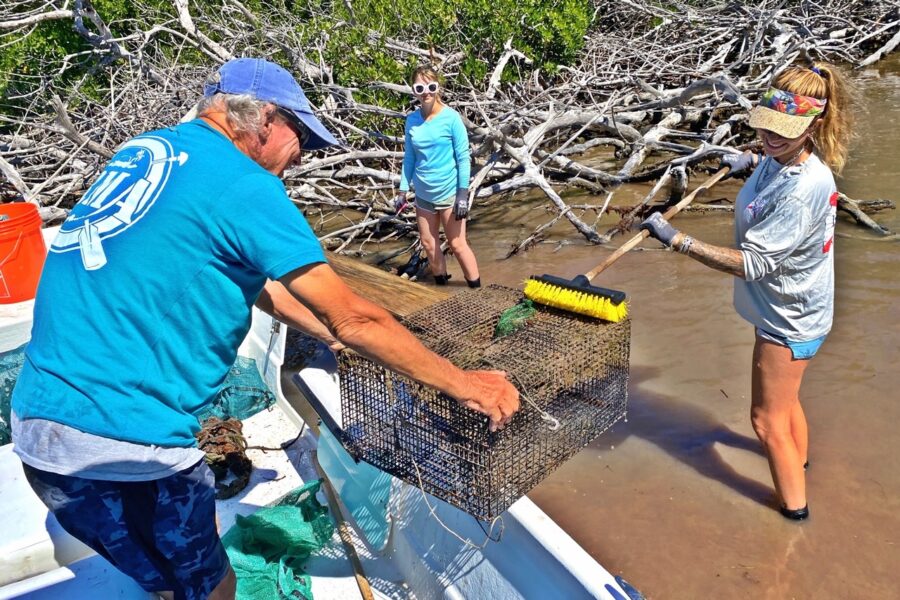
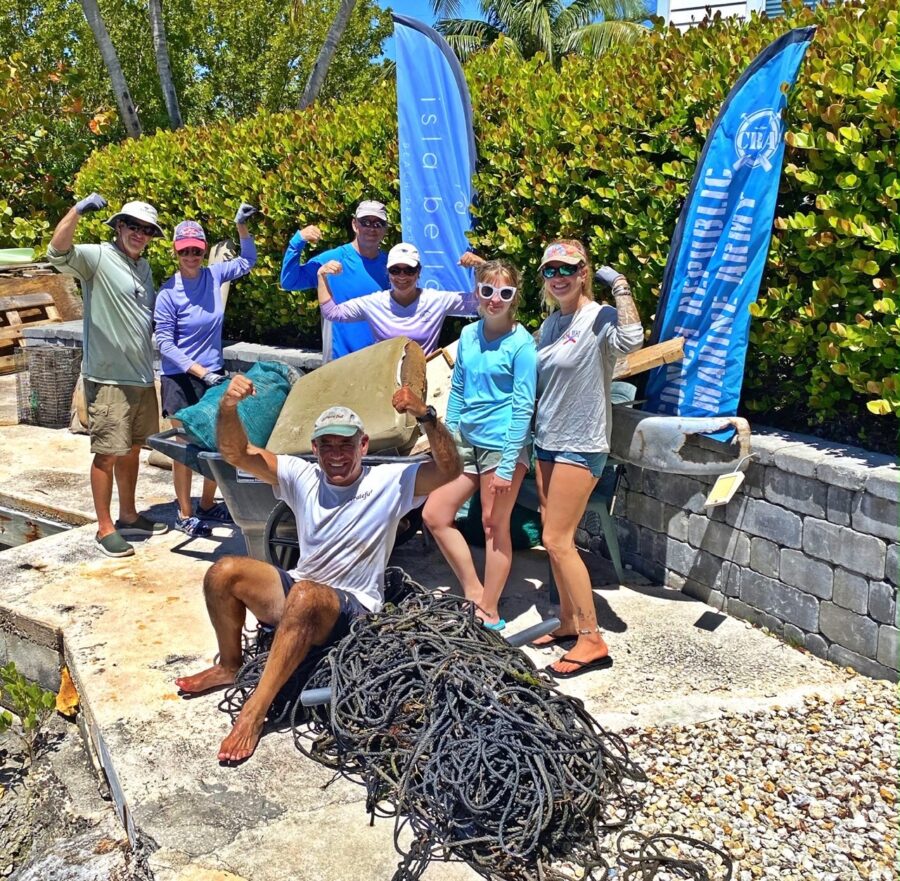
Our first mission was to collect a heap of trash that was acquired by the previous group. We exited the boat and formed a human assembly line from the shore, helping each other and handing over the items until each item was gathered into the boat. We were immediately engulfed by a swarm of mosquitoes, and of course I forgot my bug spray, so I ended up with about 20 welts as souvenirs. Among the debris collected, there were pieces of plywood, a plastic chair, hundreds of yards of rope, pieces of broken-up plastic and even a tire. There was also a surprisingly large amount of washed-up horseshoe crab molts, so I took one home as both a souvenir and a teaching object for my classroom (I’m a middle school science teacher).
After collecting the clump of garbage, we headed up the shoreline again and stopped the boat when we saw where the previous group’s collection efforts ended. We all exited the boat with our medical shears and green storage bags to start cutting the entangled rope that was hanging from the surrounding trees. I personally found a broken-down crab trap, lots of fishing line and various types of rope. We were able to work as a team and even grabbed an intact trap to be washed and reused. The largest find of the day: an enormous ball of rope that took four people to carry.
Low tides forced a slow trip back, so we enjoyed the surroundings, observing many nurse sharks and even a few rays swim by. The water was a gorgeous blue-green and the wind was blowing ever so slightly. When we arrived back at the marina we formed yet another assembly line and lined up the collected trash along the sea wall. In total we collected 160 pounds that day – 90 pounds of rope and 70 pounds of trash.
Black rope was sent to No Name Key, where a company gives it new life by selling it for conversion into plastic pellets used to create various new products. Unfortunately, other types of rope couldn’t be recycled and will make their way to landfills. The day unfolded beautifully, making the experience truly rewarding. I eagerly await contributing to future expeditions. It’s so amazing to see organizations coming together for the betterment of the community and our planet.
By focusing on sustainability and preserving the Keys’ natural beauty, the partnership between CRMA and Isla Bella sets a great example through action. This commitment goes even further with the resort’s recent donation; an $85,000 contribution from Isla Bella helped CRMA acquire the brand new K3 skiff. The Middle Keys workhorse is a crucial addition to the fleet for ongoing conservation efforts.
The best part about all of this? When space allows, the community can get involved in cleanup efforts for free, just as I did. For more information about the cleanups, visit conchrepublicmarinearmy.org and islabellabeachresort.com.
Photos by JEN ALEXANDER/Keys Weekly
